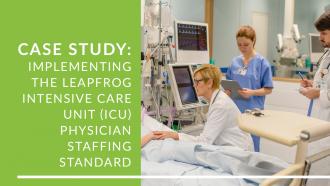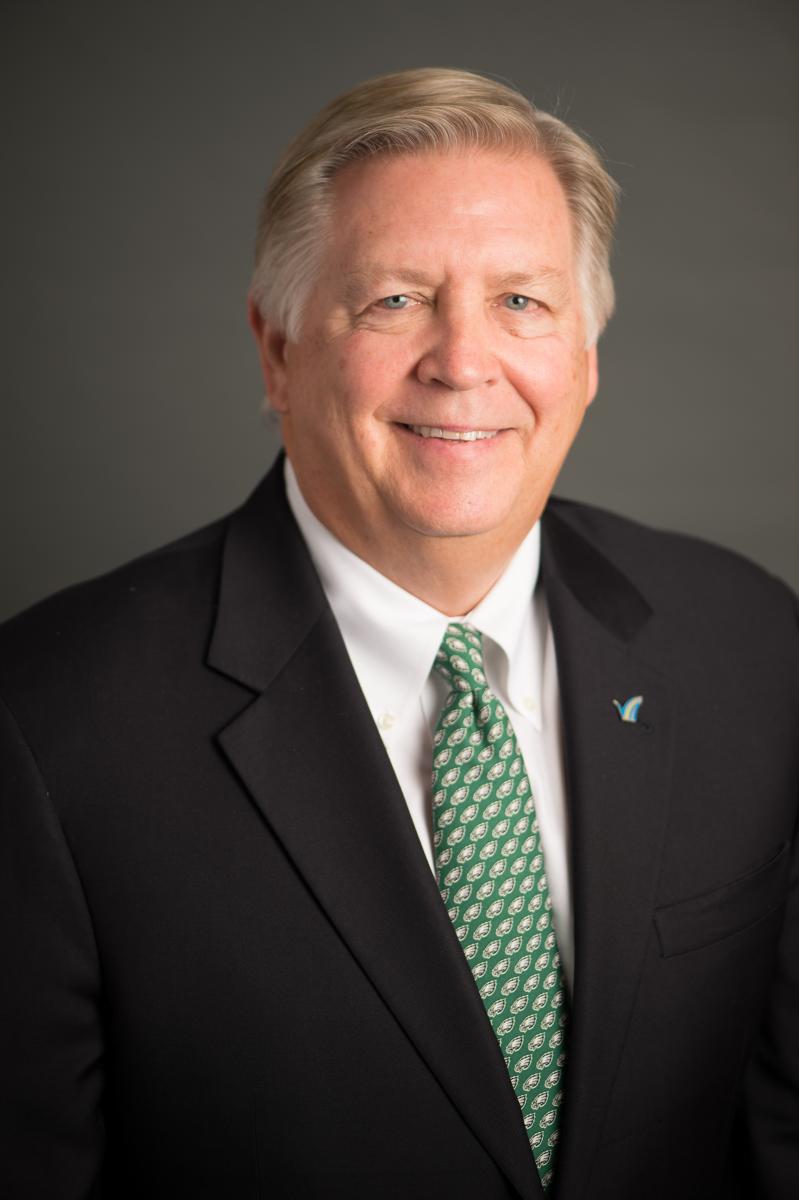

 When Doylestown Hospital – part of a nonprofit health care network that has delivered care to the Doylestown, Pennsylvania community for more than 90 years – received a “C” on the Spring 2016 Leapfrog Hospital Safety Grade, hospital President and CEO Jim Brexler led a campaign to dramatically improve patient safety throughout the hospital, ultimately increasing its Safety Grade to an “A” in Fall 2016. One key area of improvement was adapting its staffing model to meet Leapfrog’s ICU Physician Staffing (ICU) Standard.
When Doylestown Hospital – part of a nonprofit health care network that has delivered care to the Doylestown, Pennsylvania community for more than 90 years – received a “C” on the Spring 2016 Leapfrog Hospital Safety Grade, hospital President and CEO Jim Brexler led a campaign to dramatically improve patient safety throughout the hospital, ultimately increasing its Safety Grade to an “A” in Fall 2016. One key area of improvement was adapting its staffing model to meet Leapfrog’s ICU Physician Staffing (ICU) Standard.
In the following interview, Brexler explains how Doylestown Hospital made this change and offers advice for other hospitals seeking to increase intensivist coverage.
To learn more about the steps Doylestown took to address this challenge, click here to read the case study.
Leapfrog: How did you previously staff the ICU before adopting the Leapfrog standard?
Jim Brexler, President and CEO: In our previous staffing model we had a limited number of doctors with admitting privileges to the ICU, which included a group of physicians who were board-certified intensivists and who were also private-practice community doctors. With our old staffing model, we could not staff the ICU on site to meet Leapfrog’s standard of at least eight hours a day, seven days a week, because the intensivists had other responsibilities within their community practices.
Leapfrog: How did you make the decision to expand your intensivist coverage?
Jim Brexler: We had to decide whether the benefits of increasing on-site coverage would be worth the additional cost. In addition, we had to work with the community doctors to determine how their practice patterns would have to change. Together, we decided to assist them with financial support to add doctors to their practice to meet Leapfrog’s ICU physician staffing requirements.
Leapfrog: What sort of support or rationale did your hospital board and leadership request to approve this change?
Jim Brexler: We are blessed with a board committed to quality; it is its first priority. It focuses on community investment, as opposed to financial return, so when we explained the Leapfrog standard to the board – and why it was required – it fully endorsed the change.
Leapfrog: How did you implement this new staffing model and establish a budget to cover it?
Jim Brexler: Over the period of a few months, we discussed what additional manpower would be required to establish a model to ensure the coverage we needed without creating undo disruption or negative impact to our physicians’ currently private practice. While there were financial challenges to overcome, they weren’t as much of a concern because we knew it was a necessary investment to provide the best quality care possible.
In addition, we approached a donor with a history of support for areas related to respiratory care to help us fund the program. That made the financial hurdle much easier.
Leapfrog: Research has shown that hospitals staffing their ICUs with doctors specializing in critical care medicine can reduce ICU mortality by as much as 40 percent. Have you seen similar results?
Jim Brexler: Because we had previously implemented many of the evidence-based practices that result in better clinical outcomes – and our outcomes were good – we didn’t expect to see much of an improvement. We’ve actually been pleasantly surprised. Since implementing the program, we’ve experienced a decrease in length of stay and in mortality.
Leapfrog: How has integrating intensivists into daily rounds impacted hospital staff?
Jim Brexler: At Doylestown we regularly do patient safety rounds, during which members of the executive and quality teams visit the units and ask staff for their feedback on how our processes are working. About a year after we implemented this new intensivist staffing model, I was doing patient safety rounds in the ICU when the staff thanked me for starting the intensivist program. I said, “I’m pleased to hear that, but these are the same doctors who have always been seeing your patients. What’s different now?” They explained that having a physician in the unit meant they no longer needed to wait for a call back if there was a change in a patient’s condition; they were able to perform multi-disciplinary rounds on every patient and make integrated care plans; and could provide immediate answers to concerned family members. These were incredibly powerful changes to the processes we had in the ICU, and if they were the only outcomes we saw from introducing the program, I would’ve declared it a victory. Of course, on top of all this, we’ve also seen better clinical outcomes, so this program has been extremely worthwhile on multiple levels.
Leapfrog: Has meeting the Leapfrog standard for ICU physician staffing had any influence or impact on your organization's business development strategy or clinical program opportunities?
Jim Brexler: Absolutely. To be a market leader in our region we need to offer the best value and highest quality care. Leapfrog’s ICU Physician Staffing Standard is a critical part of the Leapfrog Hospital Safety Grade. Our “A” on the Leapfrog Hospital Safety Grade is evidence of our commitment to these goals and is a huge component of our business development strategy. If we aren’t meeting a particular standard, it’s critical we know that so we can close the gap.
While we didn’t establish the intensivist program with the goal of providing new services, it has helped us offer more to the community. For example, we now offer a highly specialized breast reconstruction (DIEP Flap) for breast cancer patients, in large part because the intensivist program provides the level of monitoring required after this surgery.
In addition, we have become a referral center for complex cardiac and vascular cases in the Philadelphia area. If it wasn’t for the intensivist program and our “A” on the Leapfrog Hospital Safety Grade, many primary care doctors would not be comfortable having their most complex cardiac patients transferred to our hospital.
Leapfrog: What advice do you have for other hospitals, like yours, that are looking to increase intensivist coverage to meet Leapfrog’s standard?
Jim Brexler: My first piece of advice is to understand why the standards exist. Don’t just increase your intensivist coverage to get an “A” on the Leapfrog Hospital Safety Grade; rather, do it because it’s the best thing for your patients and community.
Second, don’t assume there’s no room for improvement. Be humble and look internally to determine whether you can improve the quality of care you deliver.
Finally, try to work with your existing medical community to determine how they can benefit by increased intensivist coverage. This makes it a win-win as it can improve its standards and you, as the hospital, can better support your entire staff.
